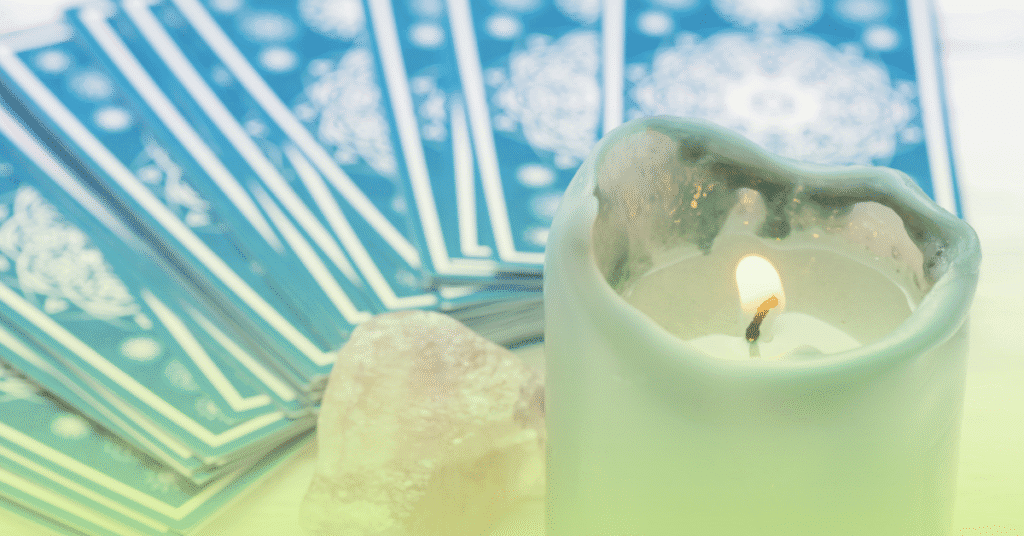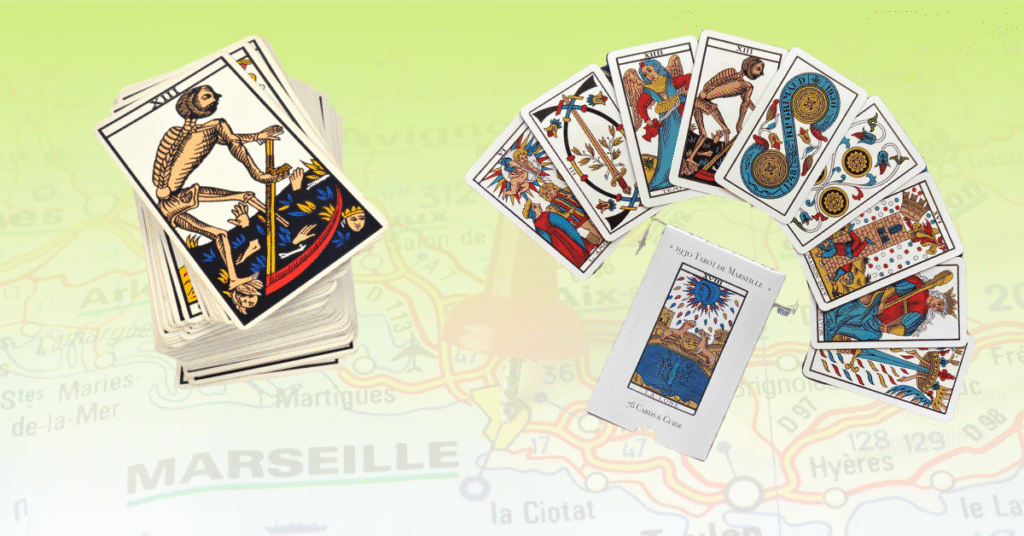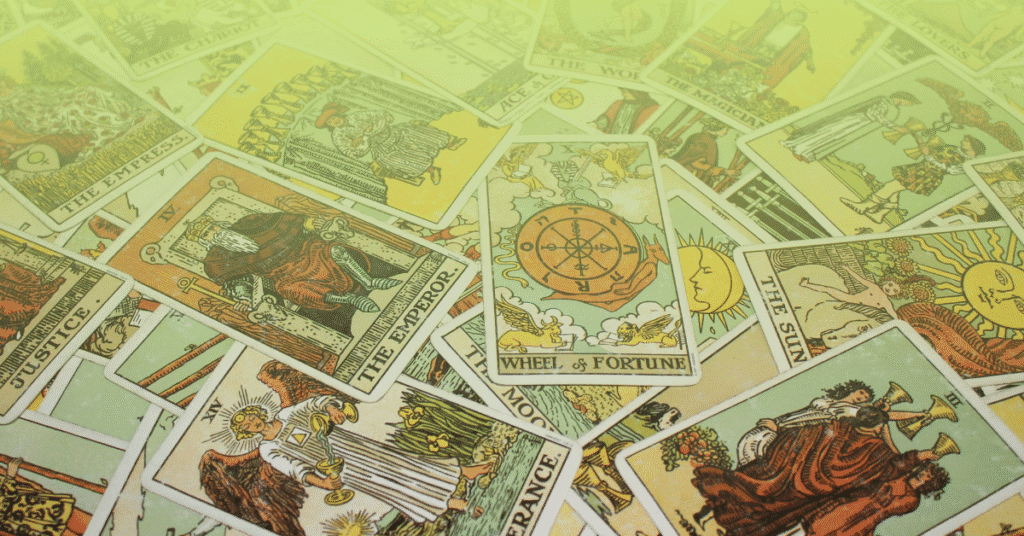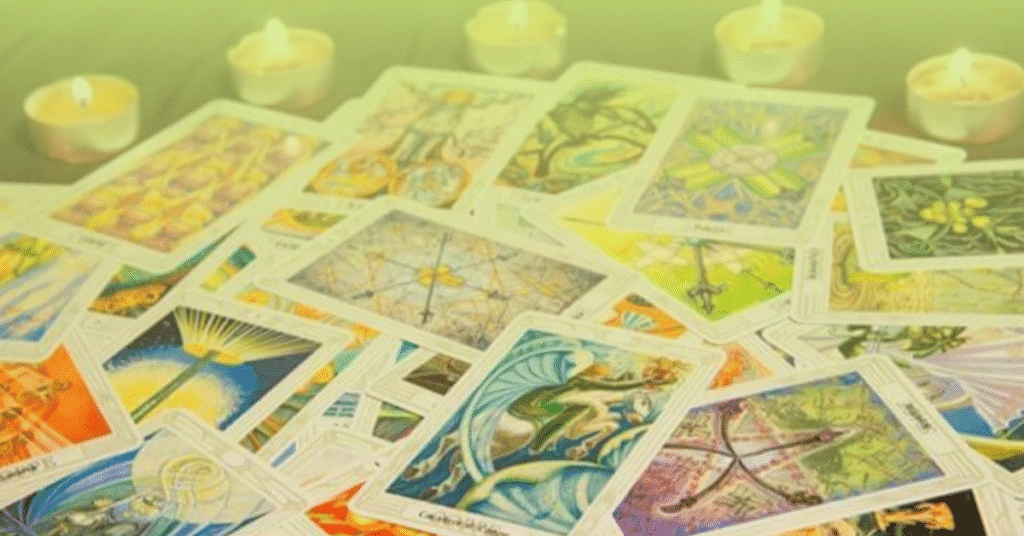
The Evolution: Three Schools of Tarot
With countless tarot decks and instruction manuals claiming to be the definitive guide to divination, it’s easy to assume there’s only one true deck—the Rider-Waite. But while it is undoubtedly the most recognized, it wasn’t the first.
Tarot has an ancient and fascinating history, with three significant decks shaping its evolution: the Marseilles, the Rider-Waite, and the Thoth.
Let’s take a journey through time and uncover how tarot evolved from a simple card game to the powerful tool of self-discovery we know today.
It All Began with the Marseilles Deck (17th-18th Century)
One of the earliest and most influential tarot decks, the Tarot de Marseille, originated in 17th-century France. Unlike modern tarot, which is used for introspection and guidance, the Marseilles deck was primarily a card game—similar to bridge or solitaire.
🔹 It consisted of 78 illustrated cards, divided into the Major Arcana (22 cards) and Minor Arcana (56 cards across four suits—Swords, Cups, Coins, and Wands).
🔹 The Major Arcana contained recognizable figures like The Hanged Man and The Lovers.
🔹 The court cards included Page, Cavalier, Queen, and King (slightly different from today’s standard Page, Knight, Queen, and King).

Tarot as a Game and Storytelling Tool
During this era, tarot wasn’t yet linked to divination. It was a social game, and rules were often passed down verbally. The deck also had an unexpected use—players would pull random cards and craft poetic, humorous, or even dramatic narratives about others in the group.
This early form of storytelling through symbols became the foundation for tarot’s later role as a tool for guidance. Though people weren’t yet using it to tell fortunes, they were already tapping into its ability to spark intuition and deeper insight.
The Rider-Waite Deck (19th-20th Century): Tarot’s Global Breakthrough
Fast forward to the 19th century, a time when people were increasingly drawn to mysticism, esotericism, and self-exploration. Tarot’s transition from a simple game to a divination tool was fueled by the belief that the cards held ancient wisdom.
One of the key figures in this transformation was A.E. Waite, a mystic and scholar of the occult. He collaborated with Pamela Colman Smith, an artist and fellow member of the Hermetic Order of the Golden Dawn, to create what is now the most recognizable tarot deck in the world: the Rider-Waite Tarot.

What Made the Rider-Waite Deck Revolutionary?
Detailed Symbolism: Unlike its predecessors, every single card—including all 56 Minor Arcana cards—was richly illustrated with detailed, meaningful imagery. This made it easier for readers to intuitively interpret the messages.
A Companion Guide: Before this deck, tarot knowledge was largely passed down through oral tradition. The Rider-Waite deck came with a guidebook, making tarot accessible to the everyday person.
Astrology & Occult Influences: Waite incorporated astrological associations into the deck, further connecting tarot with the esoteric sciences. For instance, The Strength card was linked to Leo, and The Lovers was associated with Gemini.
However, despite its significance, the Rider-Waite deck was not an instant success. Many people at the time couldn’t afford to buy tarot decks, and skepticism toward the occult was still widespread.
So how did it become the most iconic tarot deck in the world?
Enter Stuart R. Kaplan.
Kaplan, the founder of U.S. Games Systems, Inc., discovered the Rider-Waite deck decades later and saw its untapped potential. He acquired the rights, republished the deck, and introduced it across Europe and the United States. With time, it gained mass popularity, becoming the most widely recognized tarot deck in history.
To this day, the Rider-Waite deck remains the only tarot deck that has never gone out of print.
The Thoth Deck (1969): A Deeper Dive into the Occult

The Thoth Deck (1969): A Deeper Dive into the Occult
While Rider-Waite became the mainstream tarot deck, another powerful and controversial deck emerged—the Thoth Tarot, created by Aleister Crowley.
Crowley, an influential (and highly controversial) occultist, sought to take tarot deeper into alchemy, astrology, and Egyptian mysticism. Inspired by the ancient Egyptian Book of Thoth, he developed a deck of 80 cards with three additional Magus cards, breaking away from some of the traditional structures of tarot.
How the Thoth Deck Differed
Astrological Associations Were Altered: The Leo sign was linked to Lust (rather than Strength), and Aquarius, previously associated with The Star, was instead connected to The Emperor.
Card Numbering Was Changed: The Strength and The Justice cards swapped positions from their Rider-Waite placements.
A Strong Occult Influence: Crowley incorporated alchemy, numerology, and Kabbalah into his deck’s structure and meanings.
While the deck itself was revolutionary, Crowley’s infamous reputation cast a shadow over its success. Often labeled “the wickedest man in the world,” Crowley was accused of practicing dark rituals, which led many to fear his work. This stigma contributed to the Thoth deck being less mainstream than the Rider-Waite, despite its deep esoteric significance.
However, to this day, the Thoth Tarot remains one of the most respected decks for those drawn to deep occult studies.
The Legacy of These Decks Today
Each of these decks played a crucial role in shaping the tarot landscape we know today:
🔮 Marseilles Tarot: The blueprint for modern tarot’s structure, blending storytelling with symbolism.
🔮 Rider-Waite Tarot: The game-changer that made tarot accessible worldwide.
🔮 Thoth Tarot: A deep, mystical system for those drawn to advanced esoteric wisdom.
While Rider-Waite remains the most widely used deck, many modern tarot decks are variations or reinterpretations of these foundational designs.
So if you’ve ever wondered which deck is “the right one”—the truth is, there isn’t one. Each deck carries its own energy, history, and approach. The best tarot deck is the one that resonates with you.
Closing Thoughts:The Evolution of Tarot is the Evolution of Us
Looking at the history of tarot, one thing becomes clear—tarot has always been evolving. From a card game to a divination tool to a powerful means of self-discovery, tarot has grown alongside human consciousness.
And just as tarot has evolved, so do we. Each time we pick up a deck, we aren’t just tapping into history—we’re continuing the story.
So whether you’re drawn to the mysticism of the Thoth deck, the timeless wisdom of Rider-Waite, or the roots of the Marseilles, tarot is ultimately a mirror. It reflects who you are, where you’ve been, and the infinite possibilities ahead.

